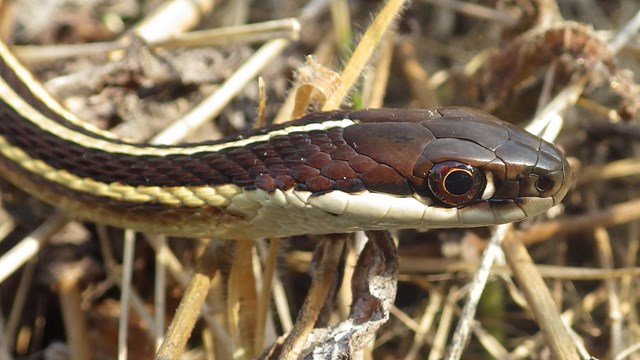
National Park Service 
National Park Service Visitors can find turtles and snakes in riverine, riparian, and terrestrial habitats along the river. Reptiles often take advantage of both aquatic and terrestrial habitats throughout their lifetime. For example, turtles may spend much of their time in the river but then move on land to lay eggs. By spending time in both types of habitats, reptiles help to transfer nutrients and energy between water and land. |
Last updated: February 25, 2022


